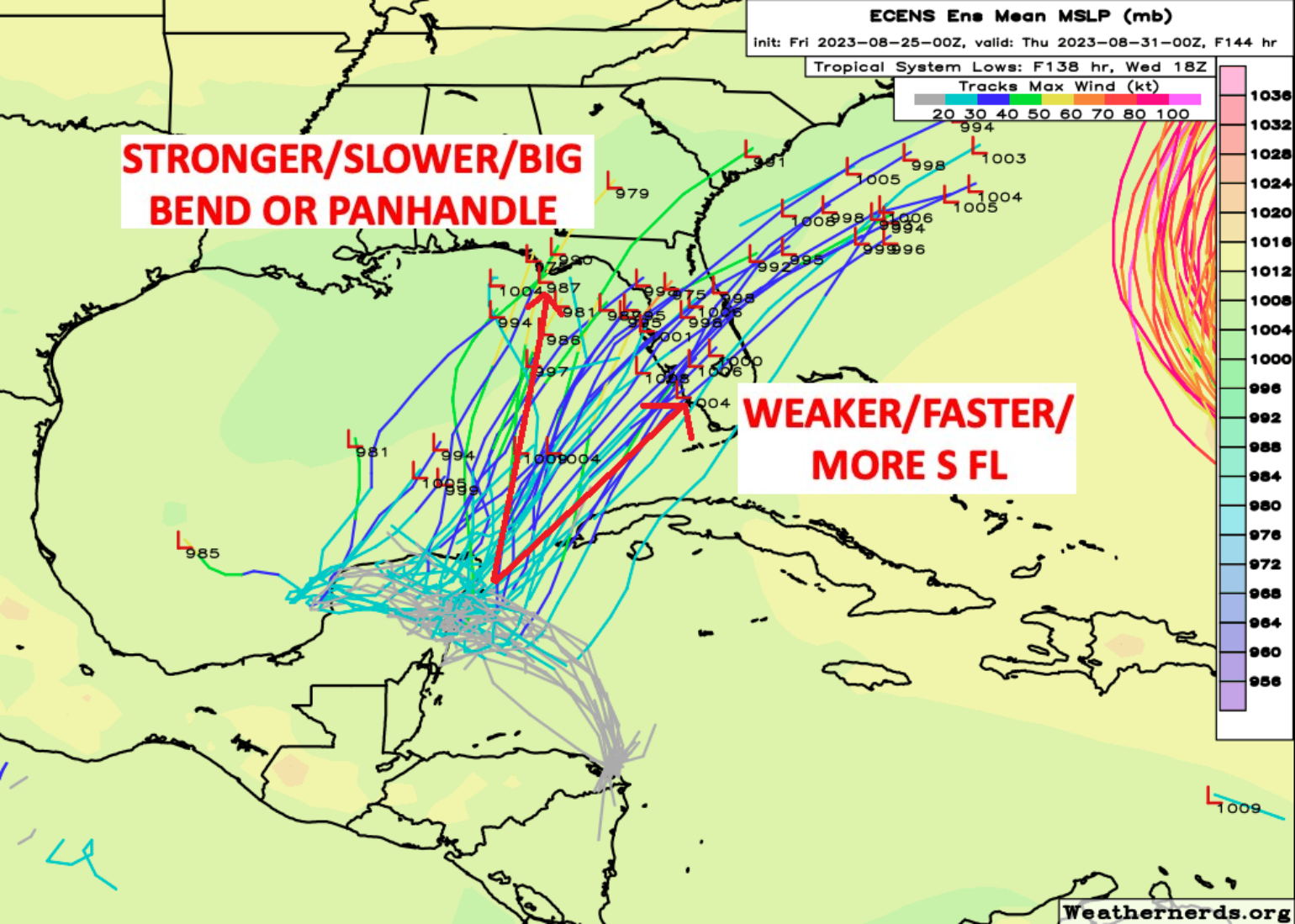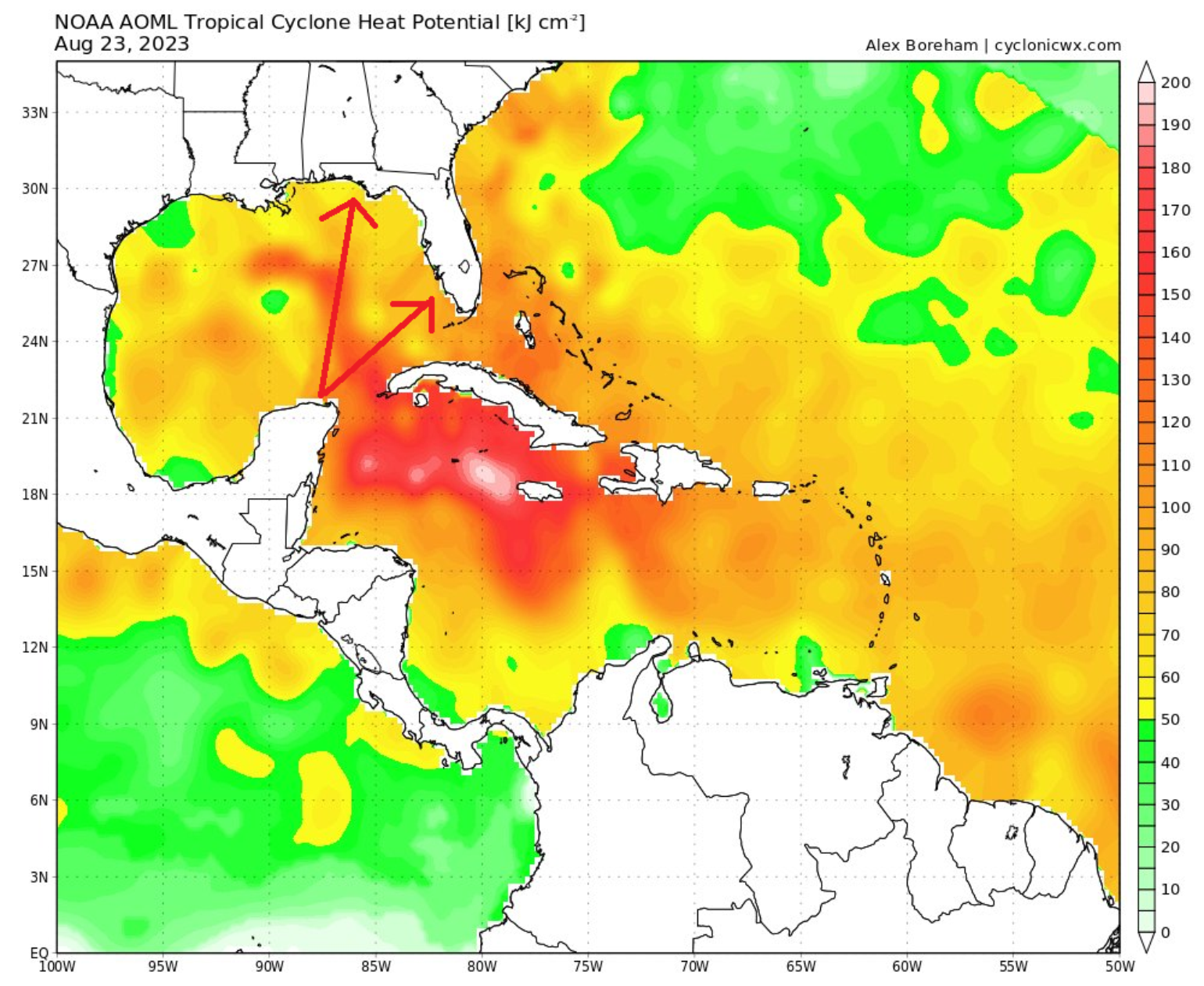BMS Tropical Update 08/25/2023
You might have noticed that the National Hurricane Center (NHC) has started watching an area of disturbed weather over the northwestern Caribbean Sea, producing disorganized showers and thunderstorms. Environmental conditions appear conducive for the gradual development of this system during the next several days, and a tropical depression is likely to form late this weekend or early next week while moving generally northward over the northwestern Caribbean Sea and eastern Gulf of Mexico. As of this posting, the NHC puts the probability of development at 70%. It is too early to estimate insured impacts as the storm has yet to develop. However, as we highlighted in the BMS Tropical Update to start the week, this was one area of concern as we look at the next two weeks of heightened activity before the basin likely goes quiet around the peak of the Atlantic Hurricane Season.
What We Know
The insurance industry will be looking at a tropical storm and maybe even a possible Category 1 hurricane impacting the Gulf Coast of Florida around midweek. A broad area of low pressure over the Northwest Caribbean Sea is expected to develop gradually in the next few days. The system will track northeast towards Florida and should make landfall along the West Florida coastline sometime Tuesday (8/29) PM or Wednesday (8/30) AM next week. This will bring heavy rain and strong winds to a large portion of Florida’s central and northern peninsula. We could also see impacts along the coastlines of Georgia, South Carolina, and North Carolina as the storm looks to intensify off the East coast of the U.S. All insurance companies that have risk in these areas should prepare for impacts arriving mid-week to late next week if risks are along the East Coast.
These BME Re Tropical Update updates have highlighted the usefulness of the ECMWF over other models. The ECMWF was hinting at this area of development since earlier this week, while, once again, the GFS model was late to the party in suggesting tropical troubles would be developing.

ECMWF ensemble continues to hint at a couple of possible scenarios for the development of a Gulf system:
1) A weak system moves quickly across South Florida.
2) A slightly more robust system (due to more erosion of the trough of low pressure drawing this system up from the Caribbean and more time over the warm Gulf) allows it to move up towards the Florida Big Bend area.
3) There are still some timing differences based on these two scenarios. The further west also gives it more time over a developing eddy current through the center of the Gulf of Mexico. A more north-south track would maximize Ocean Heat Content, while a track angle across the Gulf of Mexico (45–60-degree angle) would provide a weaker storm as it limits time over water and high ocean heat content.

Hopefully, what happened later next week will end up being a beneficial rainmaker for the state of Florida and nothing else. However, as we discussed in our last update, the next storm is the “I” storm (Idalia). Remember, the “I” storms are the most retired, and we know from Ian and just this week Harold that a storm can quickly spin up over the warm waters of the Gulf of Mexico if the conditions are conducive for development. This is something to keep an eye on over the weekend.
